Ann Nicholson
Structured Prediction of Sequences and Trees using Infinite Contexts
Mar 09, 2015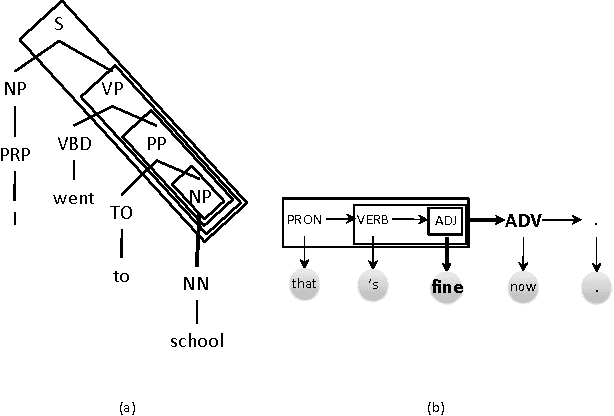

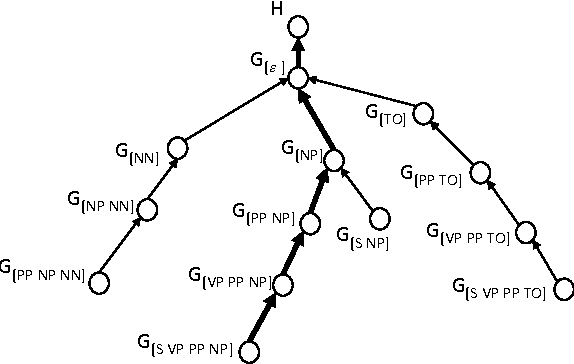
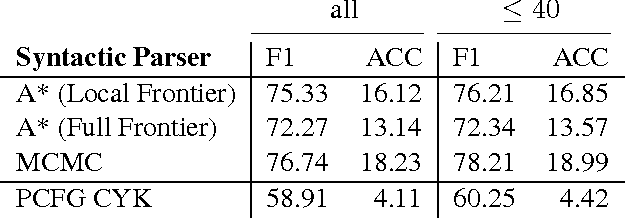
Abstract:Linguistic structures exhibit a rich array of global phenomena, however commonly used Markov models are unable to adequately describe these phenomena due to their strong locality assumptions. We propose a novel hierarchical model for structured prediction over sequences and trees which exploits global context by conditioning each generation decision on an unbounded context of prior decisions. This builds on the success of Markov models but without imposing a fixed bound in order to better represent global phenomena. To facilitate learning of this large and unbounded model, we use a hierarchical Pitman-Yor process prior which provides a recursive form of smoothing. We propose prediction algorithms based on A* and Markov Chain Monte Carlo sampling. Empirical results demonstrate the potential of our model compared to baseline finite-context Markov models on part-of-speech tagging and syntactic parsing.
Proceedings of the Twenty-Ninth Conference on Uncertainty in Artificial Intelligence
Aug 28, 2014Abstract:This is the Proceedings of the Twenty-Ninth Conference on Uncertainty in Artificial Intelligence, which was held in Bellevue, WA, August 11-15, 2013
Sensor Validation Using Dynamic Belief Networks
Mar 13, 2013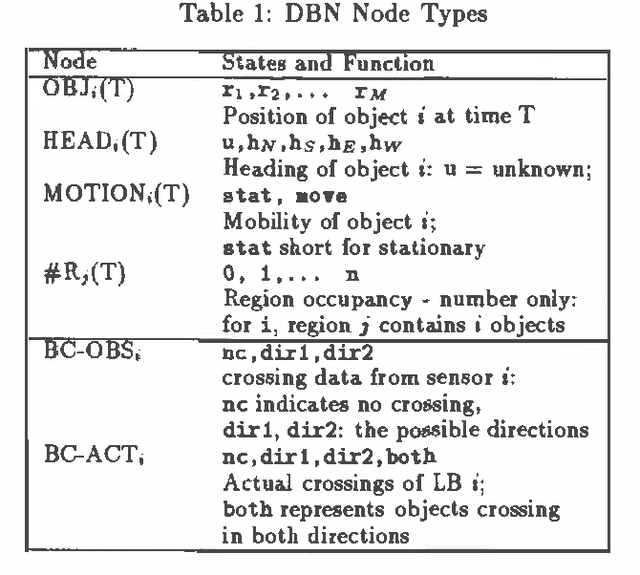
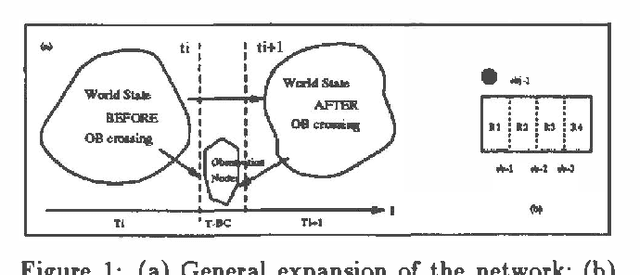
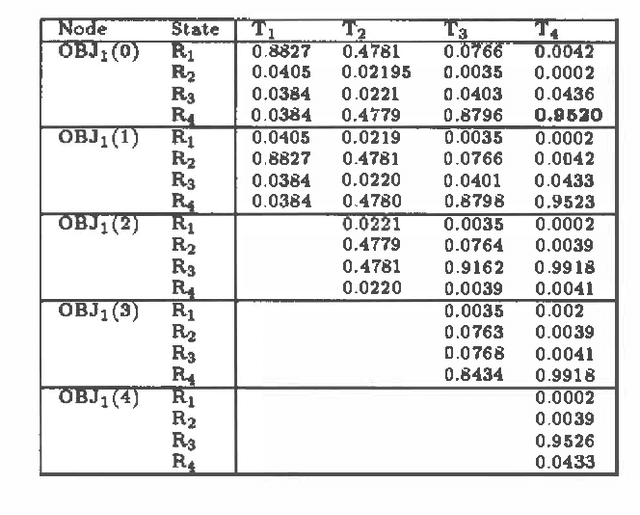
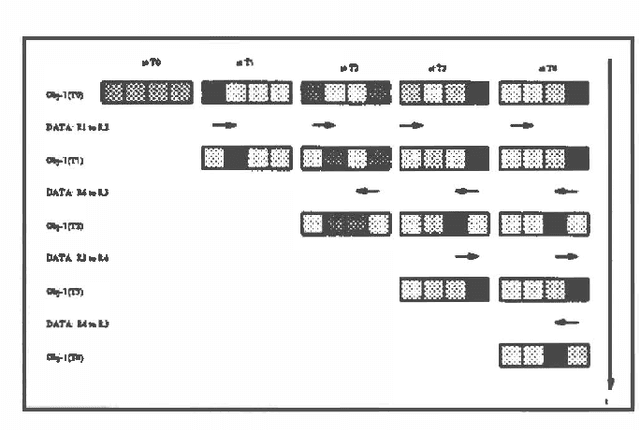
Abstract:The trajectory of a robot is monitored in a restricted dynamic environment using light beam sensor data. We have a Dynamic Belief Network (DBN), based on a discrete model of the domain, which provides discrete monitoring analogous to conventional quantitative filter techniques. Sensor observations are added to the basic DBN in the form of specific evidence. However, sensor data is often partially or totally incorrect. We show how the basic DBN, which infers only an impossible combination of evidence, may be modified to handle specific types of incorrect data which may occur in the domain. We then present an extension to the DBN, the addition of an invalidating node, which models the status of the sensor as working or defective. This node provides a qualitative explanation of inconsistent data: it is caused by a defective sensor. The connection of successive instances of the invalidating node models the status of a sensor over time, allowing the DBN to handle both persistent and intermittent faults.
Deliberation Scheduling for Time-Critical Sequential Decision Making
Mar 06, 2013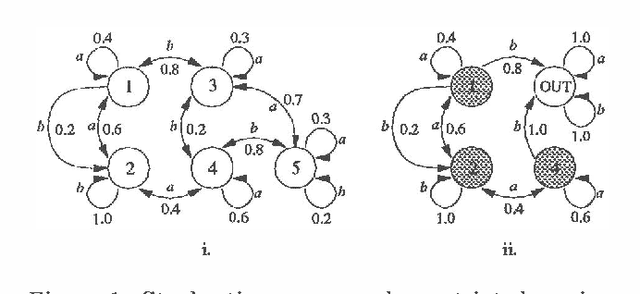
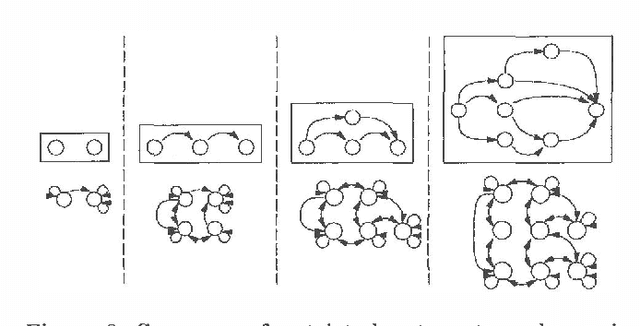
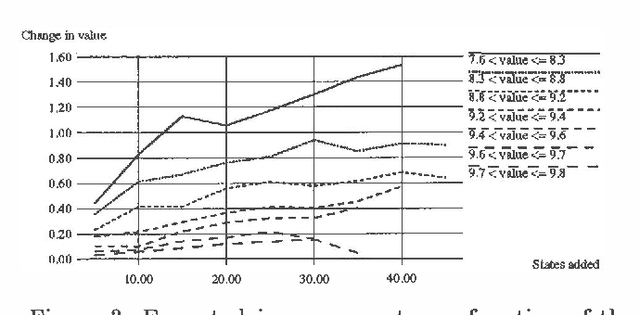
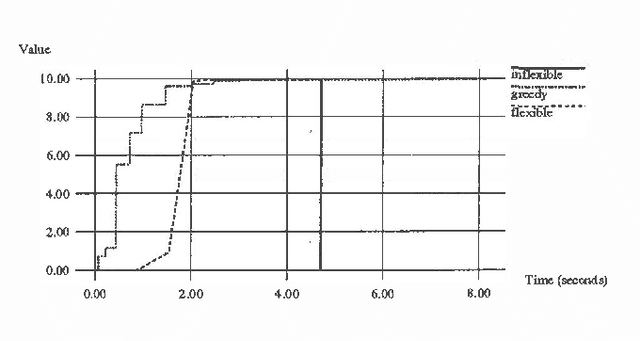
Abstract:We describe a method for time-critical decision making involving sequential tasks and stochastic processes. The method employs several iterative refinement routines for solving different aspects of the decision making problem. This paper concentrates on the meta-level control problem of deliberation scheduling, allocating computational resources to these routines. We provide different models corresponding to optimization problems that capture the different circumstances and computational strategies for decision making under time constraints. We consider precursor models in which all decision making is performed prior to execution and recurrent models in which decision making is performed in parallel with execution, accounting for the states observed during execution and anticipating future states. We describe algorithms for precursor and recurrent models and provide the results of our empirical investigations to date.
Bayesian Poker
Jan 23, 2013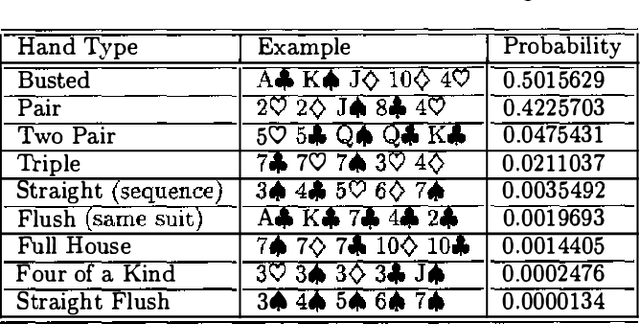
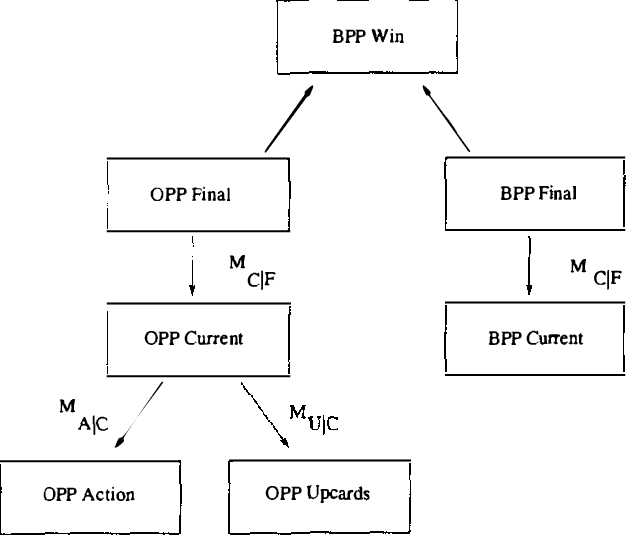
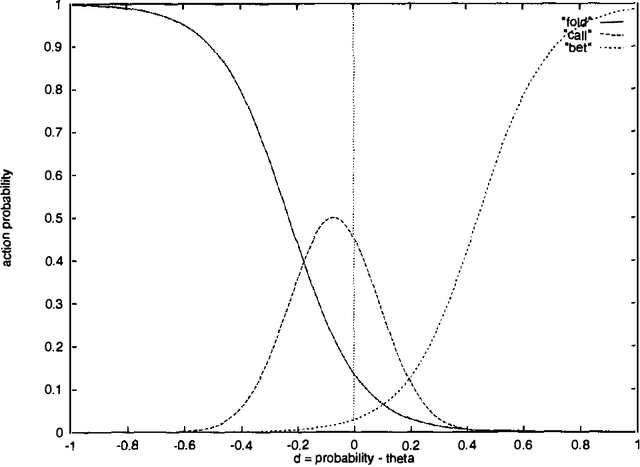
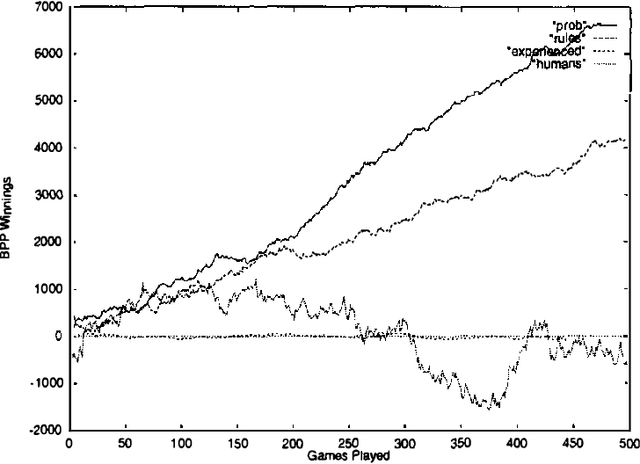
Abstract:Poker is ideal for testing automated reasoning under uncertainty. It introduces uncertainty both by physical randomization and by incomplete information about opponents hands.Another source OF uncertainty IS the limited information available TO construct psychological models OF opponents, their tendencies TO bluff, play conservatively, reveal weakness, etc. AND the relation BETWEEN their hand strengths AND betting behaviour. ALL OF these uncertainties must be assessed accurately AND combined effectively FOR ANY reasonable LEVEL OF skill IN the game TO be achieved, since good decision making IS highly sensitive TO those tasks.We describe our Bayesian Poker Program(BPP), which uses a Bayesian network TO model the programs poker hand, the opponents hand AND the opponents playing behaviour conditioned upon the hand, and betting curves which govern play given a probability of winning. The history of play with opponents is used to improve BPPs understanding OF their behaviour.We compare BPP experimentally WITH : a simple RULE - based system; a program which depends exclusively ON hand probabilities(i.e., without opponent modeling); AND WITH human players.BPP has shown itself TO be an effective player against ALL these opponents, barring the better humans.We also sketch out SOME likely ways OF improving play.
A Case Study in Knowledge Discovery and Elicitation in an Intelligent Tutoring Application
Jan 10, 2013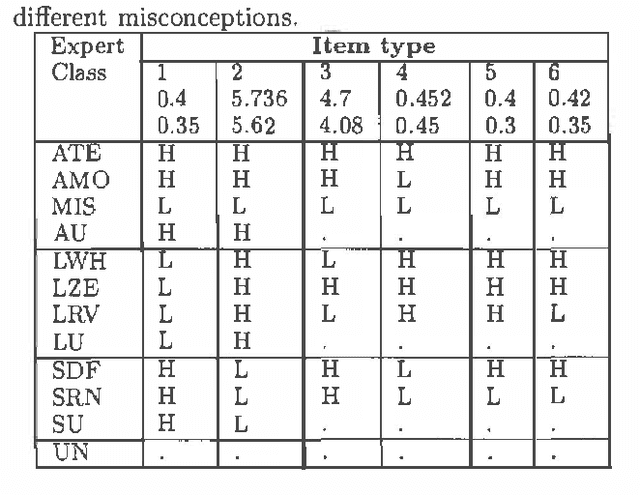
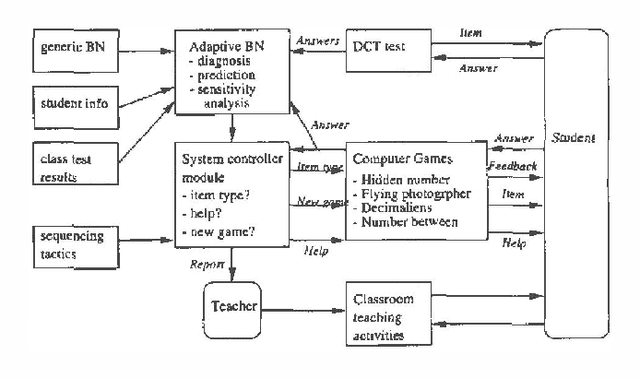
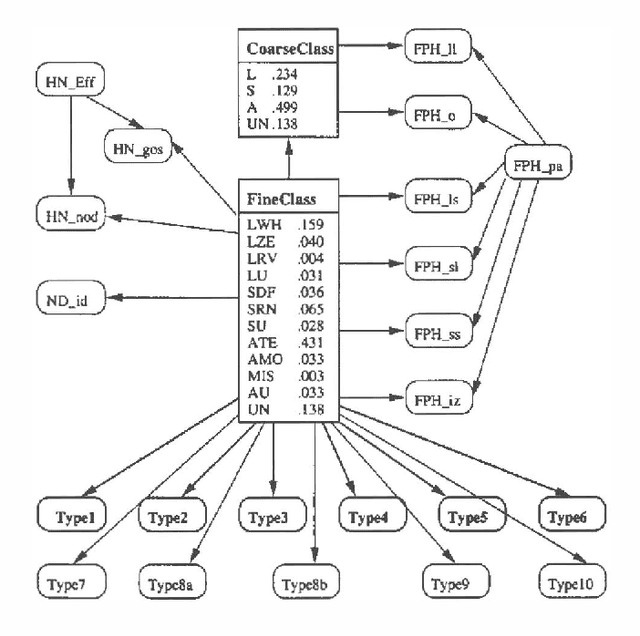
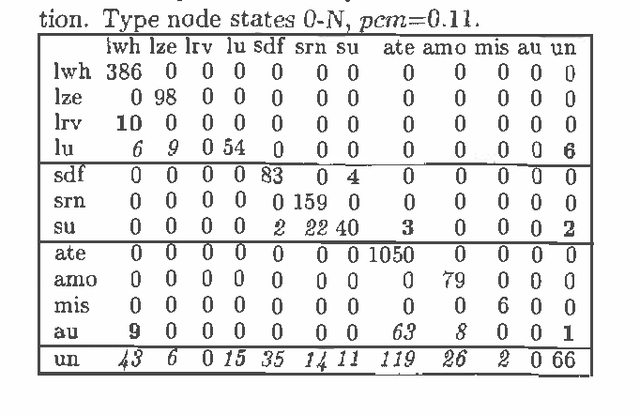
Abstract:Most successful Bayesian network (BN) applications to datehave been built through knowledge elicitation from experts.This is difficult and time consuming, which has lead to recentinterest in automated methods for learning BNs from data. We present a case study in the construction of a BN in anintelligent tutoring application, specifically decimal misconceptions. Wedescribe the BN construction using expert elicitation and then investigate how certainexisting automated knowledge discovery methods might support the BN knowledge engineering process.
 Add to Chrome
Add to Chrome Add to Firefox
Add to Firefox Add to Edge
Add to Edge